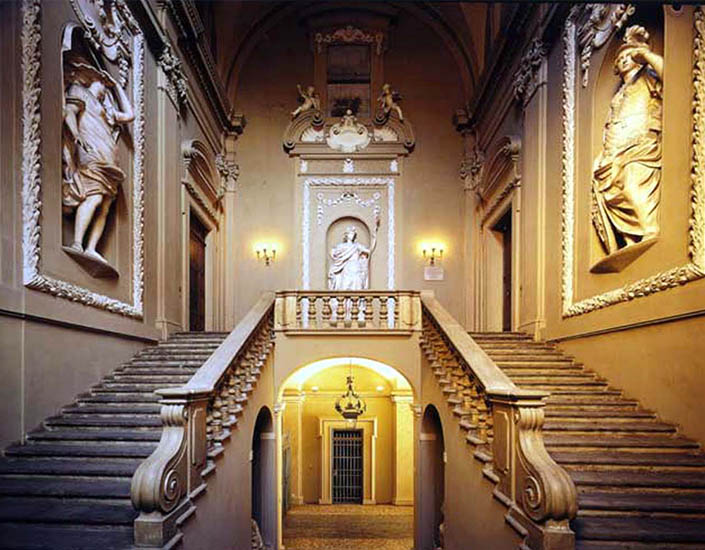This vCard is For Sale, Buy it for: $6,50
Pallavicin Palace
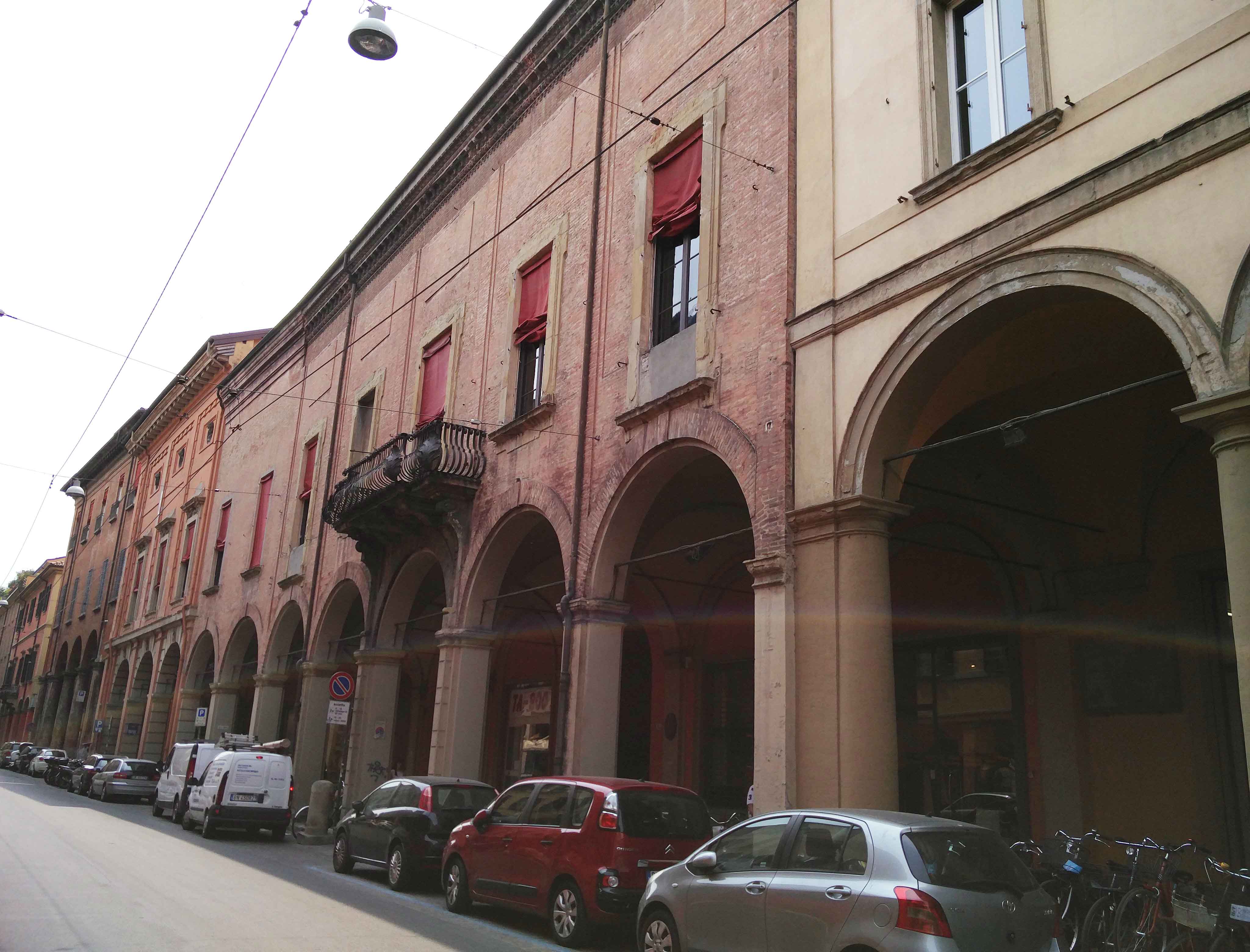
Pallavicin Palace has its roots in the Bologna fifteenth century, when under the domination of the Bentivoglio it was owned by the Sala (1493) and then passed over time to the Volta, the Marsili and the Isolani counts, who in 1680 had it restored "in the ways of senatorial architecture "(see Guidicini).

They entrusted the task to the architect Paolo Canali, who designed and built the monumental staircase and the hall with a lantern ceiling, the highest in the city together with that of Palazzo Ranuzzi, while in 1690 the rooms were lavishly decorated with paintings by Giovanni Antonio Burrini.
The arrival of Marshal Count Pallavicini
The palace was then chosen as a residence for its prestige by Marshal Gian Luca Pallavicini (Genoa, 1697-1773), leader and minister of the empire of Charles VI of Habsburg and his daughter, the Empress Maria Theresa of Austria, mother of Marie Antoinette queen of France beheaded during the French Revolution.
The count had arrived in Emilia in the mid-1700s, he was looking for a setting where he could renew the splendor of his years at the Royal Palace as Viceroy of Milan and the opportunity came in 1765, when Senator Ferdinando Bolognetti, owner of the building at the time in via San Felice, he left for Rome and rented it.

With Pallavicini, the building became the seat of a European court, offering a setting worthy of a palace: the Genoese established relations with international diplomacy, organized parties and banquets, organized concerts, hosted crowned heads and the procession that took place was memorable. took place along the staircase in 1764 on the occasion of the "Entry of the Gonfalonierato" of Senator Davia, "Peer of Scotland" and Gentleman of the Chamber of the Duke of Modena, when the most notables of the time ascended the monumental staircase amidst torches and music to celebrate the Senator, offering an unparalleled spectacle for the city.

Mozart at the Palazzo
It was in the brightly lit Burrini hall that on the evening of March 26, 1770 the fourteen-year-old Wolfgang Amadeus Mozart, a guest with the father of Marshal Conte, performed in the presence of seventy city ladies and the high European aristocracy: also guests of the Pallavicini , Count Giuseppe di Kaunitz Rittberg and the princes of Holstein and Saxen Gotha attended the concert together with the Bolognese nobility and religious authorities: Archbishop Vincenzo Malvezzi, Cardinal Legate Antonio Colonna Branciforte and Monsignor Ignazio Boncompagni Ludovisi.

Proud of the evening, on March 28 the count wrote to Minister Firmian, telling him about the event: "A conversation of 70 ladies was held in my house Monday evening in which the Cardinal Legate, the Principi of Holstein, and almost all the nobility, and the young professor gave you such admirable proofs of his knowledge, that in his tender age they would seem incredible to those who do not see them… ".
The man from Salzburg had arrived with his father Leopold on 24 March, and Gian Luca, a fine connoisseur, hadn't let him slip away. The Mozarts were his guests on several occasions: in March in via San Felice, during the summer in the Villa della Croce del Biacco and again, in the autumn, in the city palace where the antiphons Cibavit eos, Quaerite primum regnum Dei saw the light. and in all probability the minuet in E Flat Major K 94.

At the palace, the Salzburger met the protagonists of European music: MisliveÄ ek, Vanhalle, Farinelli, the musicologist Charles Burney ("I met the famous little German ... in the palace of Prince Pallavicini") and especially Father Martini, and his stay in via San Felice renewed the musical taste in the city. "Dal Pallavicino ... on the terrace there were many players who made delicious symphonies" (M. Oretti).
A European court in the heart of Bologna
Pages of international history were written in the rooms of the Pallavicini residence and important diplomatic relations were established. Here the protagonists of the politics of the time took turns: in 1768 the young Princess Maria Carolina of Habsburg passed through Bologna, escorted to Naples by the marshal to meet Ferdinand of Bourbon, her future husband.

The marshal's guests were the Grand Duke of Tuscany Pietro Leopoldo di Lorena with his wife Maria Luisa of Bourbon Spain and in 1769 the Austrian Emperor Joseph II.

On his way to Rome for his contacts with the Holy See, the emperor stayed in via San Felice on 13 and 14 March 1769, entertained with chamber concerts by Giuseppe, son of Gian Luca, again on the harpsichord in 1771 for a '"Fun" in music for the principles of Holstein and Saxen Gotha.

Friend of the Pallavicini, also the famous Farinelli gladdened the evenings of the illustrious guests and each time the palace became the scene of celebrations worthy of a European court. The "barbarian horses" race organized along Via San Felice for the arrival of Archduke Maximilian was memorable in 1775.

Even the housing of an Austrian regiment in Via del Pratello, the German servants, the Lipizzan horses purchased for Count Giuseppe testify to the international breath of the building, as well as its decorations.

The fresco with Empress Maria Theresa of Habsburg as Cybele Mother of all peoples painted on the ceiling of a room on the noble floor between 1791 and 1792 by the Bolognese Pietro Fabbri is unique in the world: an extraordinary work, absent in Austria or in the territories of the empire but present exceptionally in Bologna, painted not by chance in the year in which his daughter Marie Antoinette languished in the prison of the Temple in Paris.

The years of Giuseppe Pallavicini
When he came of age and became the owner of the building, Giuseppe Pallavicini (1756-1818) launched new construction sites, documented in detail thanks to the numerous papers in the family archives. The young count had received an education worthy of a sovereign. As a teacher he had had Carlo Bianconi, in contact with Algarotti and with Giovanni Gioachino Winckelmann: the passion for antiquity had entered his blood. He therefore decided to transform the building in via San Felice into an avant-garde neoclassic construction site of the highest level.
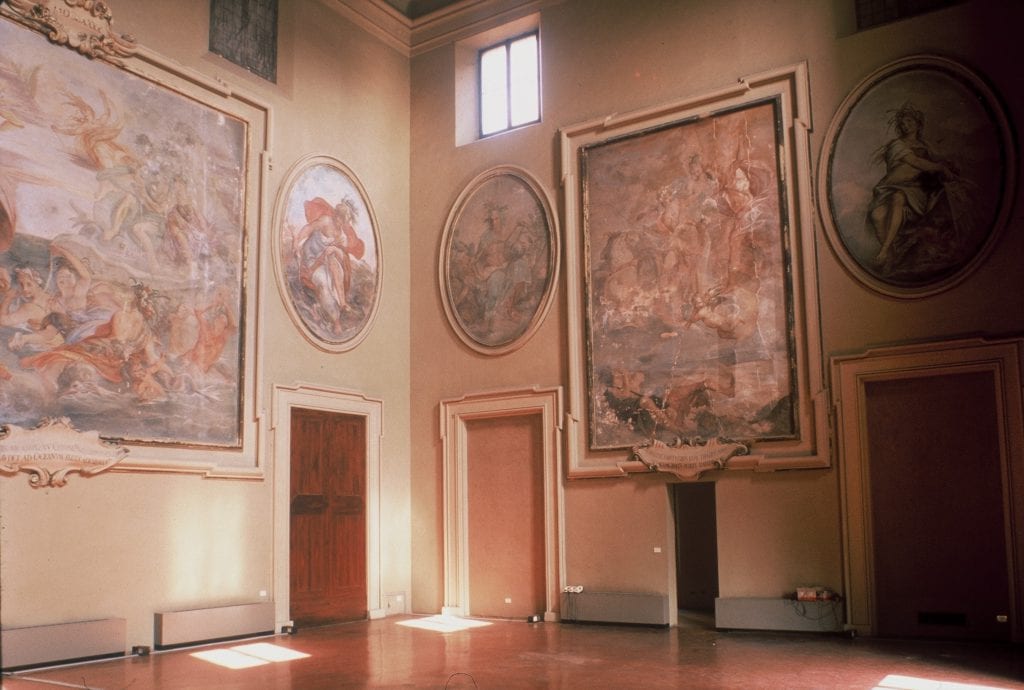
The opportunity came in 1776, when there was talk of marriage with Carlotta Fibbia. He thus involved the protagonists of the artistic civilization of his time: the architect Raimondo Compagnini, the sculptor Giacomo Rossi, the quadraturist David Zanotti, and, among others, the figurists Filippo Pedrini and Giuseppe Antonio Valliani. In terms of extension, the stucco decorations spread by Giacomo Rossi on the walls of the large rooms of the “Camerone” and the “Conviti”, with a repertoire of candelabra à la greque, are unparalleled. The pictorial decoration also involved a significant team of artists, including Giuseppe Antonio Valliani and the figurists Emilio Manfredi and Francesco Sardelli, whose works testify to the taste for antiquity that is repeated in the various rooms.
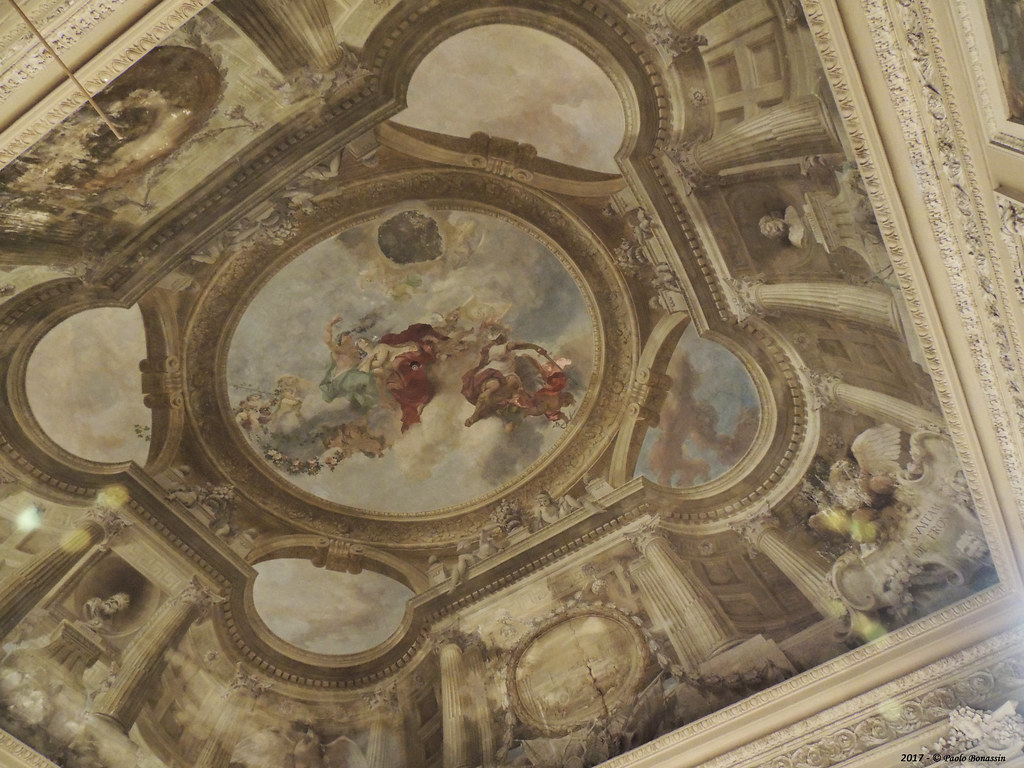
The presence of the Bolognese painter Filippo Pedrini, author of two ceilings set in the landscapes of Vincenzo Martinelli, is significant: a tribute to the mercantile origins of the Pallavicini. Serafino Barozzi, on the other hand, painted the flower garlands that climb along the walls of the "Conviti" hall, repeating in Bologna the ornaments made in the summer palace of the Oranienbaum for Catherine of Russia.
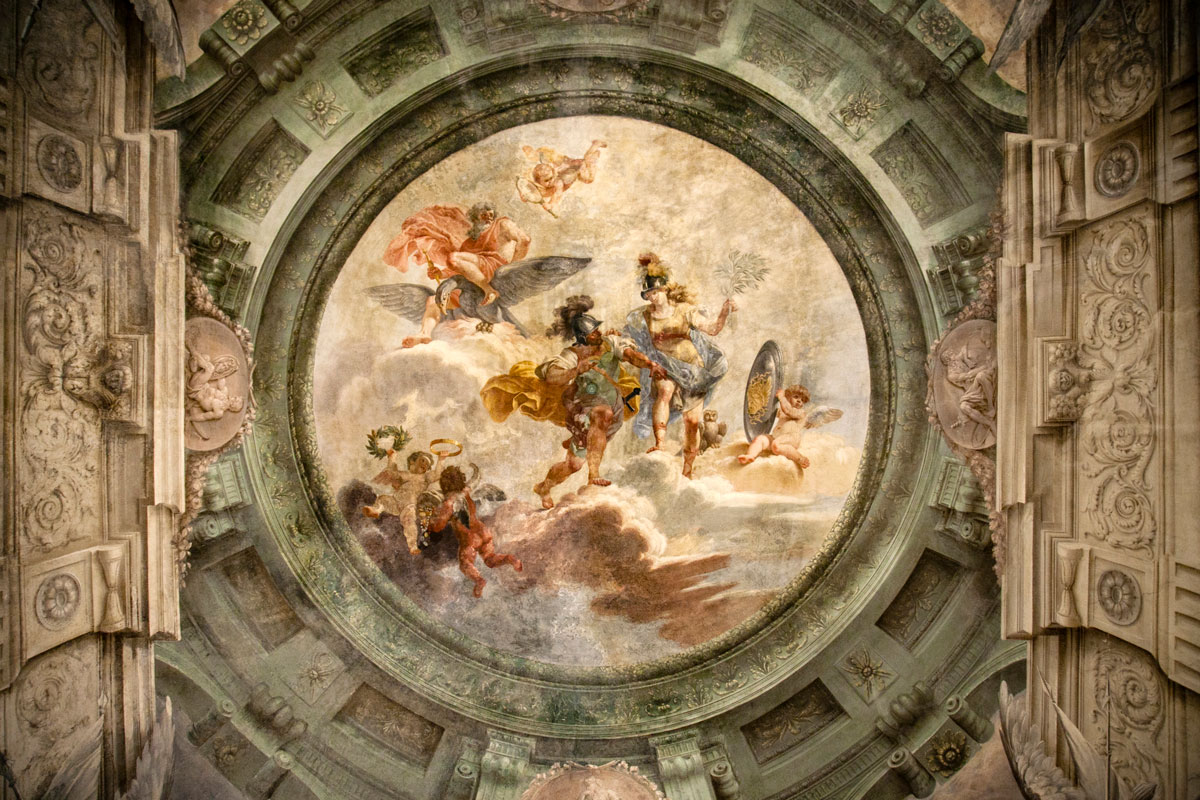
The path in the neoclassical construction sites of Palazzo Pallavicini then continued with the library, destined for the eighteen thousand volumes of Count Gian Luca, where once again we encounter a unicum in Bolognese painting, since the author of the library, the quadraturist Flaminio Minozzi, signed and dated " 1792 ”the dome of the hall, a rare event in the history of art for a fresco.

Elisabetta Landi, Gianluca and Giuseppe Pallavicini: culture and artistic and musical commissions, in Maria Camilla Pallavicini, edited by, "Quaderni Obertenghi" secc. XVI-XIX, n. 4, Rome, Obertenga Cultural Association, 2014, pp. 403-422
Video: Pallavicin Palace
Map: Pallavicin Palace
Address: Via S. Felice, 24, 40122
Bologna (BO) Emilia Romagna
Latitude: 44.49650915749623
Longitude: 11.334559321403503
Site: https://www.palazzopallavicini...
vCard created by: CHO.earth
Currently owned by: 00002652
Type: Palace
Function: Museum
Creation date:
Last update: 08/08/2021
vCard Value: $6,50
vCard Views: 1488
